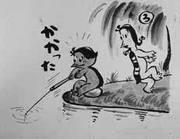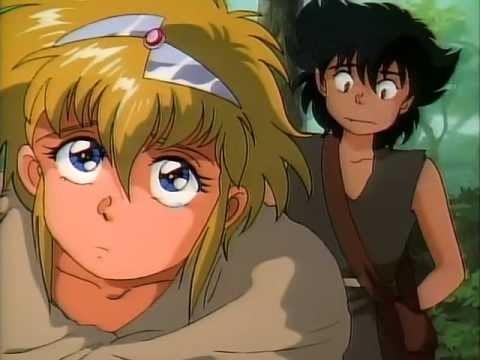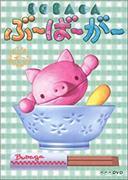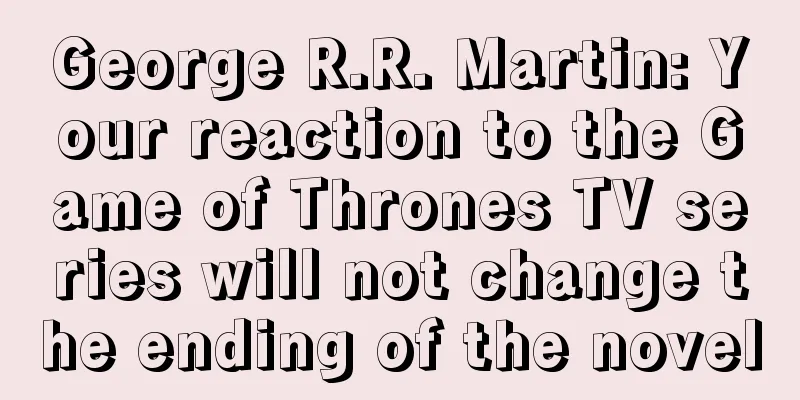Review of "Kappakawa Taro": Charming characters and deep story

"Kappagawa Taro": A masterpiece that marks the dawn of Japanese animation■Overview of the work"Kappa Kawataro" is a Japanese animated film released in April 1954. It was released in theaters and the original media is an anime original. It was distributed by NCC, the film is 19 minutes long and has one episode. It was written by Shimizu Kon and produced by Mitsui Arts Productions, Mitsui Takatsugu, and Yoshioka Kenji. The film begins with a single hand-drawn drawing of an adorable baby kappa by Shimizu Kon, and tells the story of the baby kappa Kawataro, the main character. ■ StoryThe film begins with a single stroke of an adorable baby kappa drawn by Shimizu Kon's hand. The protagonist, Kawataro, catches a large eel underwater, but is caught in a cast net. It is his kappa parents who pull it out. The film depicts the peaceful Kappa Village, where the parents and son watch kappa sumo. However, a storm comes and there are no fish in the river, and the villagers are left scrambling to find food. Kawataro goes out to catch dragonflies with a girl friend, but is chased by wild dogs, and they run deep into the mountains and sleep outdoors. The next morning, they find that the river upstream is full of fish. This is because the river had been blocked by a landslide caused by the storm. When Kawataro discovers this, he immediately alerts the village, and the entire Kappa Village team removes the boulder from the river. The river is filled with fish again, and peace is restored to the village. ■Explanation"Kappa Kawataro" is a Japanese animated film released in 1954, based on the manga "Kappa Mura" by Shimizu Kon. The film was well-received as a children's film about kappas, and later inspired the adult-oriented "Kappa Tengoku" serialization in the Weekly Asahi. Shimizu Kon's kappas are humorous and adorable characters that are loved by children. The film also occupies an important place in the history of Japanese animation, and is a valuable resource for learning about the techniques and expression of animation from the early days. ■ Main staffKappakawa Taro was produced by Mitsui Arts Productions, Mitsui Takamune, and Yoshioka Kenji. Planning and sponsorship were handled by Asahi Shimbun Company, the original story was by Shimizu Kon, the script was by Iizawa Tadashi, background cooperation was by Mutsuura Mitsuo, music was by Hattori Tadashi, poetry was by Sato Hachiro, commentary by Ari Michiko, sound effects by Eguchi Takao, sound by Terao Yukio, recording studio was International Radio Center, production manager was Nishihara Haruto, drawing and animation by Nichido Eiga, animation direction by Yabushita Yasuji, chief animation by Furusawa Hideo, animation by Mori Koji, Ichino Shoji, Kondo Susumu, Morohashi Hajime, Nagai Yasuji, and Okada Yayoi, background cooperation by Daikuhara Akira and Sasamori Kei, photography by Takagi Taisaku, Ishikawa Takaaki, and Yamada Kozo. This staff worked together to create a fascinating work using cutting-edge animation technology at the time. ■ Evaluation and influence of the work"Kappa Kawataro" is one of the most highly acclaimed Japanese animated films of the 1950s. It was loved by children at the time and touched many people. It also occupies an important place in the history of Japanese animated films and is a valuable resource for learning about early animation techniques and methods of expression. In particular, the kappas drawn by Shimizu Kon are depicted as humorous and adorable characters, and were loved by children. This work was also well-received as a kappa film for children, and later became the catalyst for the adult-oriented serialization of "Kappa Tengoku" in the Weekly Asahi. ■The appeal of the workThe appeal of "Kappa Kawataro" lies above all in the humorous and lovable characters of the kappa drawn by Shimizu Kon. Kawataro and the other kappas are beloved by children and have touched many people. The story is also very cleverly developed, making it enjoyable not only for children but also for adults. In particular, the scene where Kawataro finds a lot of fish in the river upstream and rushes to the village is very moving and has touched many people. The visual expression, which makes full use of the most advanced animation technology of the time, is also stunning, and the visual beauty is also one of the attractions of the work. ■ Background of the work"Kappa Kawataro" is a Japanese animated film released in 1954, based on the manga "Kappa Mura" by Shimizu Kon. The film was well-received as a children's film about kappas, and later inspired the adult-oriented "Kappa Tengoku" serialization in the Weekly Asahi. Shimizu Kon's kappas are humorous and adorable characters that are loved by children. The film also occupies an important place in the history of Japanese animation, and is a valuable resource for learning about the techniques and expression of animation from the early days. ■ Evaluation of the work"Kappa Kawataro" is one of the most highly acclaimed Japanese animated films of the 1950s. It was loved by children at the time and touched many people. It also occupies an important place in the history of Japanese animated films and is a valuable resource for learning about early animation techniques and methods of expression. In particular, the kappas drawn by Shimizu Kon are depicted as humorous and adorable characters, and were loved by children. This work was also well-received as a kappa film for children, and later became the catalyst for the adult-oriented serialization of "Kappa Tengoku" in the Weekly Asahi. ■ Influence of the work"Kappa Kawataro" is one of the most highly acclaimed Japanese animated films of the 1950s. It was loved by children at the time and touched many people. It also occupies an important place in the history of Japanese animated films and is a valuable resource for learning about early animation techniques and methods of expression. In particular, the kappas drawn by Shimizu Kon are depicted as humorous and adorable characters, and were loved by children. This work was also well-received as a kappa film for children, and later became the catalyst for the adult-oriented serialization of "Kappa Tengoku" in the Weekly Asahi. ■Recommending a work"Kappa Kawataro" is one of the most highly acclaimed Japanese animation films from the 1950s. It was loved by children at the time and touched many people. This work also occupies an important place in the history of Japanese animation films, and is a valuable resource for learning about the animation techniques and expression methods of the early days. In particular, the kappas drawn by Shimizu Kon are depicted as humorous and adorable characters, and were loved by children. This work was also well-received as a kappa film for children, and later became the catalyst for the adult-oriented "Kappa Tengoku" serialization in the Weekly Asahi. Please watch this work and experience the charm of Japanese animation at that time. |
<<: Ryokan-sama: The moving and critical acclaim of this heartwarming anime
>>: The appeal and reviews of "The Story of Little Rabbit": A thorough analysis of this moving story
Recommend
Former BW producer comments on the adaptation of "Mass Effect": You can't just copy the game content
Earlier, there were reports that Amazon was negot...
A live-action The Sims movie is in the works, with Rocky director directing
According to The Insneider, a live-action adaptat...
Tencent Video's sci-fi series matrix announced: including "The Three-Body Problem 2" and "Stellaris"
Liu Cixin's science fiction masterpiece "...
The appeal and reviews of "Fantasy Children": A thorough explanation of this masterpiece of fantasy anime
Fantastic Children - A story of adventure and lov...
The appeal and evaluation of the Kimagure Orange Road event version
The appeal and reviews of "Kimagure Orange R...
The Iron Man Transformers mirror Optimus Prime alloy model is priced at $400
Recently, the famous Japanese model manufacturer ...
The Emotions and Challenges of "RE-MAIN": Rebirth of Youth Depicted through Water Polo
A comprehensive review and recommendation of RE-M...
Space Battleship Yamato: The New Voyage: Reassessing Director Yoshinobu Nishizaki's Masterpiece
"Space Battleship Yamato: The New Voyage&quo...
The governor teased Stallone: If "Rambo 5" is a big hit, I will buy you a knife
Sylvester Stallone's new film "Rambo: Fi...
Big cousin claims to be the first action actress in film history and apologizes after being criticized
Jennifer Lawrence recently told Variety that befo...
Oda announced that One Piece will be suspended for a month to prepare for the final chapter
It’s finally here, the final chapter of the super...
72-year-old Rambo returns to the screen! "Rambo 5" is scheduled to be released on September 20
According to foreign media reports, Lionsgate ann...
"Kamen Rider" 50th Anniversary Movie Theme Song PV to be released on December 17
The classic special effects film "Kamen Ride...
The trailer for "Pleasant Goat and Big Big Wolf: Basket of the Future" was released and will be released on the first day of the Chinese New Year
"Pleasant Goat and Big Big Wolf: Basket Out ...
"Tomodachi Game": A thrilling anime that tests friendship and delves into psychological warfare
Tomodachi Game - An extreme psychological game of...









